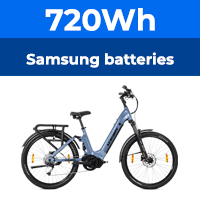This is pretty old, but in case someone bumps in to it, I would like to rectify some information.
Gazelle made many different bikes with the innergy label. The first ones (2009 - 2011) had the controller integrated in the headlight. The front wheel motor had a 9 pins connector. Some of the bikes only have a pas sensor that measures if the pedals are rotating. Other only seem to have an (analog?) TMM sensor that measures the chain tension, so the amount of strenght you put yourself on the pedals. Maybe the more expensive models had both sensors. Later on, the gazelle innergy system started to use a different motor with a 5 hole connector. On this motor type, the controller is integrated in the motor itself. Some of the bike models use a direct hub motor and others use a motor with an internal gearing and freewheel functionallity (XT or X2 motor). The fork width of both types are different, so you can't exchange the motors. The geared motors have a bit more torque. (35Nm instead of 30Nm for the direct hub motor) Those 2 motors don't have any hall sensors. The geared motor uses a smaller brushless motor that runs at a higher speed. It has low impedance windings that most other controllers don't like. The TMM sensor on those bike models is in a metal case and it's output is digital. It comes together with a halfround piece of black plastic / epoxy that is basically a cable splitter. The sensor input from the motor goes to both the TMM sensor and pas sensor. Some models only have a pas sensor. The motor (controller) has to be programmed to work with either just a pas sensor or both a TMM / pas sensor. The display on the gazelles is different as well. The older types with the controller in the headlight used a halfround display that was detachable. The newer models use a smaller display with only 4 buttons on the left. That display is fixed mounted on the bike. Some models have the same size of display but with only some leds instead of an lcd. Finally, there is also a square lcd display that is mounted on the center of the steering handle. I have no idea if that's for the old motor controller or new motor controller. Finally we have the battery. The first ones had the charging connector cover upside down so the screw that fixes the cover is under the connector. Those have a BMS that doesn't do any cell balancing. They also have a goretex membrane at the end in the middle to reduce humidity in the battery. Later on, they started to use a new type of BMS that had cell balancing and could measure the voltage of every individual cell group. The balance wires are very thin (and fragile) and arrive on a very small 13 pins connectors. The cells are fixed in the housing with some silicone. If you remove the silicone, you can carefully push the cells out. The cells are assembled into 4 black plastic holders that are plugged into each other. Later on, they used a plastic plate between the cells and the bms and another one at the other end of the cells. Those plates are hold in place with epoxy.
Finally, from 2014 up they redesigned the batteries again and now the BMS is together with the cells behind a (black) plastic cover that is hold in place with epoxy. The charger socket is internally connected to the bms with a 3 pins plug / socket. Those types usually have 3 rows of barcode on the sticker attached to the bottom of the battery. There even seems to exist an even more recent model that uses separate AA(A) cells for the backlight and has a led battery level indicator. Water infiltration in the battery was a common problem on the early battery designs. So finally, we have the fact that the battery has 3 wires connected to the controller. The third wire is used for serial communication between battery, display and motor controller. The system uses linbus drivers which are also used in automotive. It's not using the linbus protocol. Basically, the linbus line is hold onto 12V and pulled to gnd when data is passing over the bus. On the battery you measure around 9.2V between data and gnd.
 My tip is the sensor is faulty, so I decided to replace the sensor, the controller and the display to a third party one. But: I simply can't find the controller behind the front light where anyone else find it (like in the thread https://www.pedelecs.co.uk/forum/threads/controller-compatibility.32450/).
My tip is the sensor is faulty, so I decided to replace the sensor, the controller and the display to a third party one. But: I simply can't find the controller behind the front light where anyone else find it (like in the thread https://www.pedelecs.co.uk/forum/threads/controller-compatibility.32450/).










